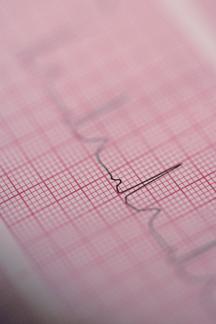
December 8, 2009 – New findings indicate reduced heart rate recovery in combination with heightened T-wave alternans is a powerful predictor of cardiovascular and all-cause death in low-risk populations. The study, published in the December edition of the HeartRhythm Journal, reveals routine exercise testing could allow assessment of cardiovascular mortality based on the measurement of heart rate recovery and T-wave alternans.
The study collected data through the Finnish Cardiovascular Study conducted at the Tampere University Hospital in Tampere, Finland. Between 2001 and 2004, 1,972 men and women underwent clinical testing using an exercise bicycle and ergometer. Heart rate recovery and T-wave alternans were registered on an electrocardiogram and, when analyzed together, exceeded the predictive value of either parameter alone, as well as standard risk factors.
The combination of reduced heart rate recovery and heightened T-wave alternans has a broad implication on the clinical assessment of patients who are not easily identified otherwise by standard risk factors. The results may help shape patient therapy as health professionals direct patients toward specific exercise training to improve long-term prognosis.
“Our study is the first to combine these two variables to demonstrate the presence of high levels of T-wave alternans during exercise or recovery, adding significantly to the prognostic power of poor heart rate recovery,” said lead author Johanna Leino, BMS, department of clinical physiology of Tampere University Hospital. “In addition to improving predictability, the combined assessment of HRR and TWA may be helpful in gaining insight into the pathophysiologic mechanisms on individual patient basis, thus improving therapy.”
According to the study, the measurement of heart rate recovery could allow physicians to incorporate exercise to improve vagus nerve tone, baroreflex sensitivity and long-term prognosis. The presence of heightened T-wave alternans reflective of an unstable cardiac substrate, alternatively, could signal the need for antiarrhythmic therapy.
For more information: www.heartrhythmjournal.com


 April 24, 2024
April 24, 2024 








